Understanding Organic Traffic and Effective Ways to Increase Natural Traffic
- Published on
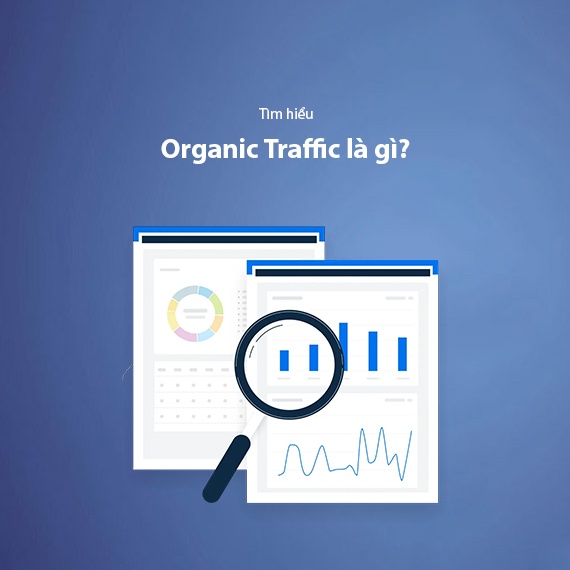
- What is Organic Traffic?
- Differentiating Organic Traffic from Other Traffic Sources
- Paid Traffic
- Direct Traffic
- Referral Traffic
- Social Traffic
- Why Should Businesses Invest in Organic Traffic?
- Organic Traffic Brings High-Quality Visitors
- Sustainable Traffic Through Organic Search
- Search Organic SEO Optimizes Long-Term Costs
- Search Organic SEO Increases Competitive Advantage
- Organic Traffic Aligns with Other Marketing Channels
- Understand Customers Through Organic Traffic Analysis
- Organic Traffic Brings More Potential Customers
- Organic Search Builds Trust for Your Brand
- Search Organic SEO is Essential in Branding Strategies
- How to Analyze Organic Traffic Metrics
- Method 1: Analyze Organic Traffic in Google Analytics
- Method 2: Analyze Organic Traffic in Google Search Console
- Method 3: Track Organic Traffic Using Third-Party Tools
- Causes of Declining Organic Traffic
- Google Algorithm Updates
- Keyword Rankings Drop
- Outdated Content
- Poor User Experience (UX)
- Technical Issues
- Increased Competition
- Google Penalties
- 7 Ways to Increase Organic Traffic Naturally
- Optimize Keywords
- Update and Optimize Old Content
- Create High-Quality Content
- Optimize Technical SEO
- Build High-Quality Backlinks
- 6. Leverage Social Media to Boost Organic Traffic
- Enhance User Experience (UX)
- Key Terms and Concepts Related to Organic Traffic
- Frequently Asked Questions About Organic Traffic
- Is Organic Traffic More Important Than Paid Traffic?
- How Can You Monitor Organic Traffic?
- Does Organic Traffic Depend on Content?
- How Can You Maintain Stable Organic Traffic?
- Why Might Organic Traffic Decline Without Major Changes?
- Should You Combine Organic Traffic with Paid Traffic?
- Conclusion
What is Organic Traffic?
Organic Traffic refers to the visitors a website receives from search engines like Google, Bing, or Yahoo without paying for advertisements. In other words, it is the traffic generated from natural search results when users type a query into the search bar and click on your website from the search engine results page (SERP). Organic Traffic is considered one of the most critical aspects of any website’s SEO strategy.
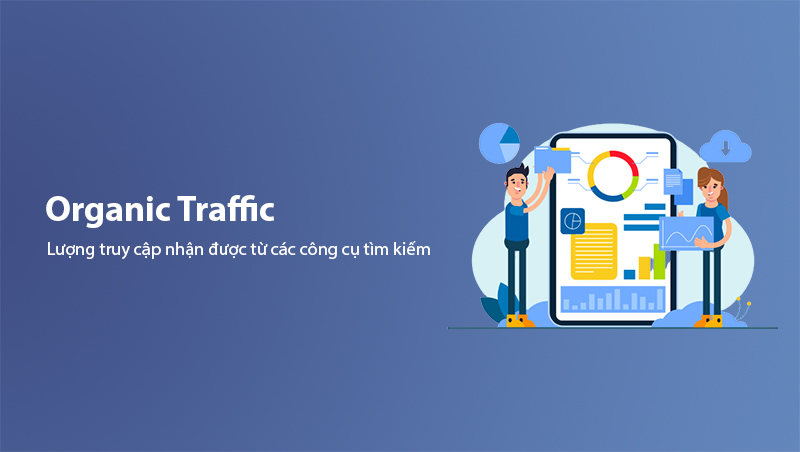
One key advantage of Organic Traffic is its sustainability. Unlike Paid Traffic (traffic generated through paid advertisements), Organic Traffic does not require ongoing payments to maintain. Once your website ranks high on search results, it continues to attract organic visitors without incurring additional advertising costs, providing long-term value for businesses.
Learn more: If you want to optimize your SEO strategy, check out our article Effective Website Optimization to Increase Organic Traffic.
Organic Traffic not only helps increase the number of visitors but also attracts high-quality potential customers. Users coming from organic search results typically have clear intent and are actively searching for solutions, increasing the likelihood of conversions. In the next section, we’ll dive deeper into how Organic Traffic compares to other traffic sources and why it is a cornerstone of marketing strategies.
Differentiating Organic Traffic from Other Traffic Sources
To fully grasp the importance of Organic Traffic, you need to understand how it differs from other types of traffic. Each traffic source has its unique benefits, but Organic Traffic stands out for its stability and long-term effectiveness.
Paid Traffic
Paid Traffic is generated through paid campaigns on platforms like Google Ads, Facebook Ads, or other advertising networks. While it is the fastest way to attract users, it requires a significant budget and is only effective for the duration of the campaign. When you stop paying, the traffic ceases immediately.
- Comparison: Organic Traffic does not require continuous payments, and once ranked high, it provides a steady stream of visitors without extra costs.
Direct Traffic
Direct Traffic occurs when users enter your website’s URL directly into their browser or access it through bookmarks. This traffic often comes from returning customers or those already familiar with your brand.
- Comparison: Direct Traffic relies on brand recognition, whereas Organic Traffic is driven by SEO and keywords to attract new customers.
Referral Traffic
Referral Traffic comes from links shared on other websites or articles directing users to your site. This traffic is often the result of building backlinks or partnerships.
- Comparison: While Referral Traffic is valuable, Organic Traffic is more proactive, as it stems from users actively searching for solutions through search engines.
Social Traffic
Social Traffic is generated from social media platforms such as Facebook, Instagram, or LinkedIn. It is a powerful source for viral campaigns but is highly dependent on the platform's algorithms.
- Comparison: Organic Traffic is more stable and less affected by algorithm changes than Social Traffic.
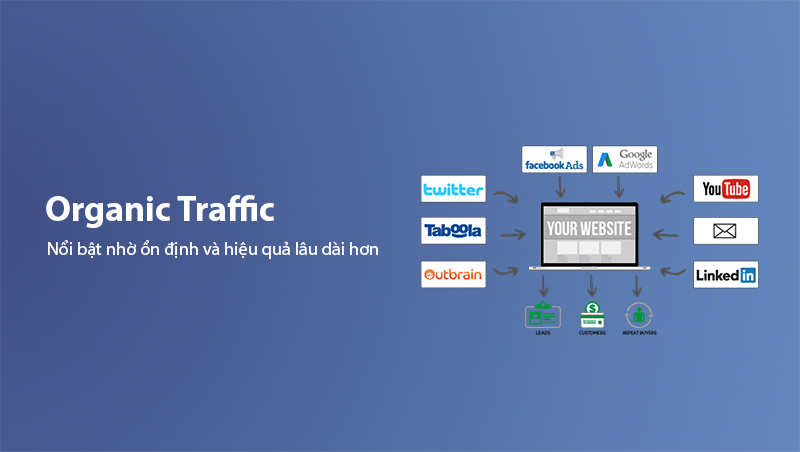
Note: While each traffic source has its value, Organic Traffic offers long-term benefits, serving as a sustainable foundation for growth. Learn more about building an effective SEO strategy in our article Comprehensive SEO Strategies.
Understanding the differences between traffic sources will help you build an effective and sustainable customer acquisition strategy.
Why Should Businesses Invest in Organic Traffic?
Organic Traffic is not only one of the most significant sources of website visitors but also offers several outstanding advantages, especially in an increasingly competitive online market. Here are the reasons why you should focus on growing Organic Traffic:
Organic Traffic Brings High-Quality Visitors
Users from Organic Traffic usually have a clear intent when searching for keywords related to your products or services. This increases the likelihood of conversion, as these customers are often in the "solution-seeking" phase and are more likely to take action than visitors from other sources.
Sustainable Traffic Through Organic Search
Once you achieve a high rank in search results, Organic Traffic continues to flow without additional costs. This is a stark contrast to Paid Traffic, which requires ongoing budgets to sustain.
Search Organic SEO Optimizes Long-Term Costs
While implementing SEO strategies requires time and effort upfront, it delivers the highest ROI (Return on Investment) in the long run. Organic Traffic reduces dependency on paid platforms and saves advertising costs.
Search Organic SEO Increases Competitive Advantage
A high-ranking website on Google easily reaches more users, asserting dominance and leading the market. Especially if your competitors do not focus on SEO, this becomes a golden opportunity to capture the online market.
Organic Traffic Aligns with Other Marketing Channels
Organic Traffic doesn’t work in isolation and can seamlessly integrate with other marketing strategies like Email Marketing, Social Media Marketing, and Paid Ads, creating a comprehensive marketing ecosystem.
Understand Customers Through Organic Traffic Analysis
Data from Organic Traffic, such as keywords and user behavior, provides deep insights into customer needs and preferences. You can use this information to optimize content and products, enhancing the customer experience.
Organic Traffic Brings More Potential Customers
Organic Traffic helps you attract not only solution-seeking customers but also build long-term relationships with them. A steady growth in potential customers allows for effective business expansion.
Organic Search Builds Trust for Your Brand
Users tend to trust natural search results more than paid advertisements. Appearing at the top of search results helps establish credibility and reinforce your brand in customers’ minds.
Search Organic SEO is Essential in Branding Strategies
Organic Traffic is a key component of any comprehensive marketing strategy. It not only helps in customer acquisition but also plays a vital role in achieving widespread brand recognition and sustainable growth.
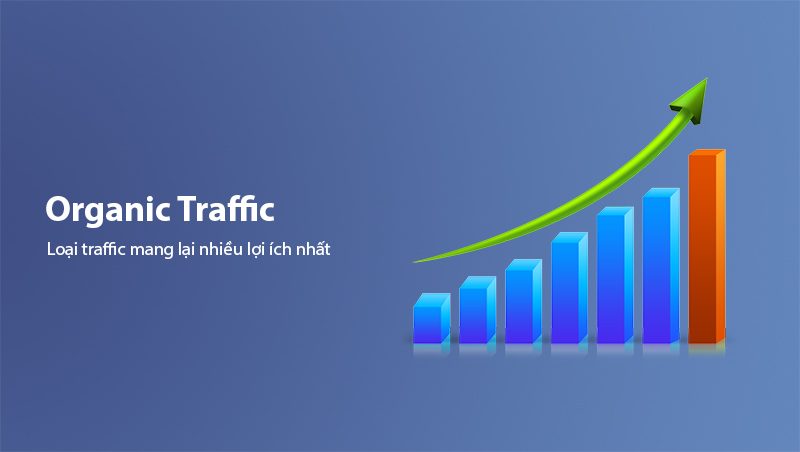
Regularly analyzing Organic Traffic metrics not only helps you optimize content but also improves SEO performance, ensuring your website consistently attracts high-quality visitors.
How to Analyze Organic Traffic Metrics
Monitoring and analyzing Organic Traffic metrics is essential to evaluate your SEO strategy’s effectiveness and identify areas for improvement. Below are methods to use popular tools like Google Analytics, Google Search Console, and third-party platforms to read and analyze these metrics.
Method 1: Analyze Organic Traffic in Google Analytics
Google Analytics is one of the most popular tools for tracking and analyzing Organic Traffic. Here’s how you can use it:
Steps to Track Organic Traffic
- Log in to Google Analytics.
- Navigate to Acquisition > All Traffic > Source/Medium.
- Select google/organic to view results.
Organic Traffic data will be displayed in charts and tables, allowing you to evaluate natural traffic trends over time.
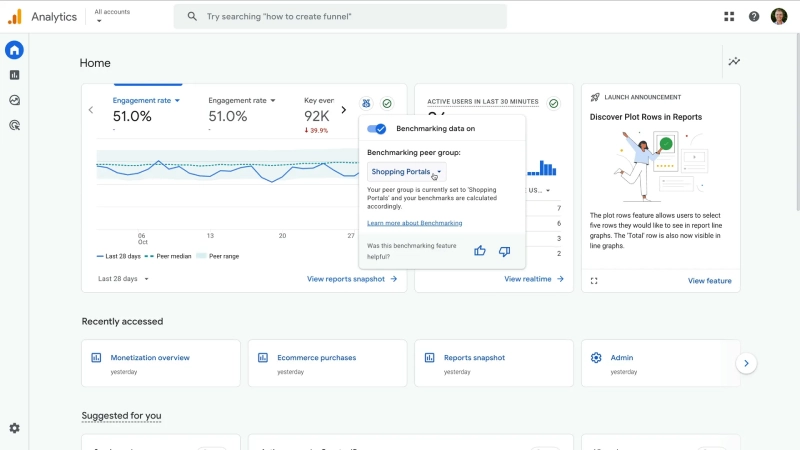
Evaluating Organic Traffic Data from Google Analytics
- Accurate, daily updated data: Understand the exact traffic from Organic Traffic alongside other sources like Social, Direct, and Referral.
- User behavior tracking: Google Analytics provides insights into metrics like time on site, bounce rate, and user behavior flow, enabling you to optimize content and website experience effectively.
Method 2: Analyze Organic Traffic in Google Search Console
Google Search Console is another powerful tool for analyzing Organic Traffic, especially for evaluating keyword performance and article effectiveness.
Steps to Track Organic Traffic
- Log in to Google Search Console.
- Select the Performance section to view the data.
Evaluating Organic Traffic Data from Google Search Console
- Keyword performance: Track Organic Traffic from individual keywords, impressions, and click-through rates (CTR).
- Overall performance: View total impressions and Organic Traffic for the entire website to assess growth levels.
- Note: Data in Google Search Console is typically one day behind Google Analytics but remains highly detailed and useful.
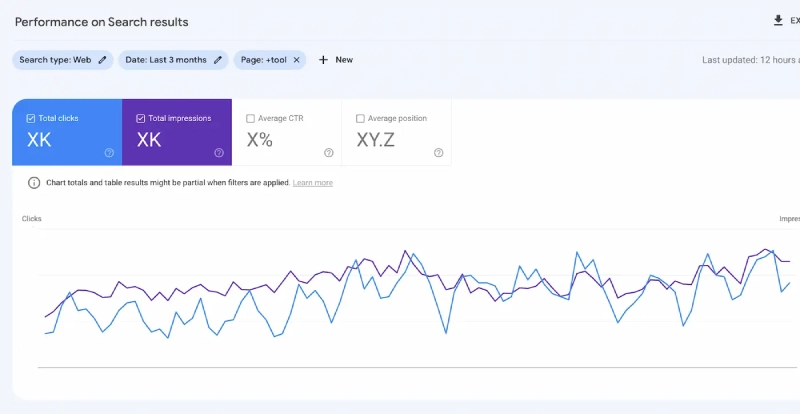
Method 3: Track Organic Traffic Using Third-Party Tools
Besides Google’s tools, you can use Ahrefs or Similarweb to monitor and analyze Organic Traffic, even for competitor websites.
Ahrefs
- Log in to Ahrefs.
- Select Site Explorer from the navigation bar.
- Enter the domain name to check Organic Traffic metrics.
Similarweb
- Install the Similarweb browser add-on.
- Click the Similarweb icon in the top-right corner of your browser.
- Results, including Organic Traffic, will be displayed along with other insights.
Benefits of Third-Party Tools
- Competitor analysis: These tools allow you to check Organic Traffic for any website, including competitors.
- Strategic planning: Use the collected data to adjust your SEO strategy for competitive advantage.
Combining these tools helps you better understand your Organic Traffic and provides comprehensive support to optimize your SEO strategy effectively.
Causes of Declining Organic Traffic
A decline in Organic Traffic can be a major concern for website administrators. Identifying the root cause is crucial to implementing timely and appropriate solutions. Below are common reasons why Organic Traffic may decrease:
Google Algorithm Updates
- Google frequently updates its algorithms, such as Core Updates, which can affect your website’s rankings on search engine result pages (SERP).
- If your website fails to meet new criteria like Core Web Vitals or E-A-T (Expertise, Authoritativeness, Trustworthiness), rankings may drop, resulting in reduced Organic Traffic.
Keyword Rankings Drop
- Keywords that previously ranked high may be overtaken by competitors.
- Shifts in search behavior or keywords becoming less popular can also reduce Organic Traffic.
Outdated Content
- Content that is outdated or no longer aligns with user search intent is likely to be rated poorly.
- Failure to optimize existing content to reflect current trends or keywords can decrease competitiveness.
Poor User Experience (UX)
- Websites with slow loading speeds, high bounce rates, or poor mobile responsiveness may be penalized by Google, leading to reduced rankings and Organic Traffic.
- Problems with Core Web Vitals, such as LCP (Largest Contentful Paint), FID (First Input Delay), or CLS (Cumulative Layout Shift), also significantly impact Organic Traffic.
Read more: Learn how to improve Core Web Vitals using PageSpeed Insights.
Technical Issues
- Crawling and indexing errors: If Google cannot crawl or index your pages, they won’t appear in search results.
- Noindex tags or misconfigured robots.txt files can unintentionally block Google bots from accessing your pages.
- Broken links (404 errors) or changes in website structure without proper redirects can also result in lost Organic Traffic.
Increased Competition
- Competitors improving their SEO strategies or creating higher-quality content can affect your rankings.
- The emergence of new websites in your industry also increases competition.
Google Penalties
- Websites violating Google’s guidelines—such as using unnatural backlinks, keyword stuffing, or duplicating content—risk penalties that can significantly reduce rankings and Organic Traffic.
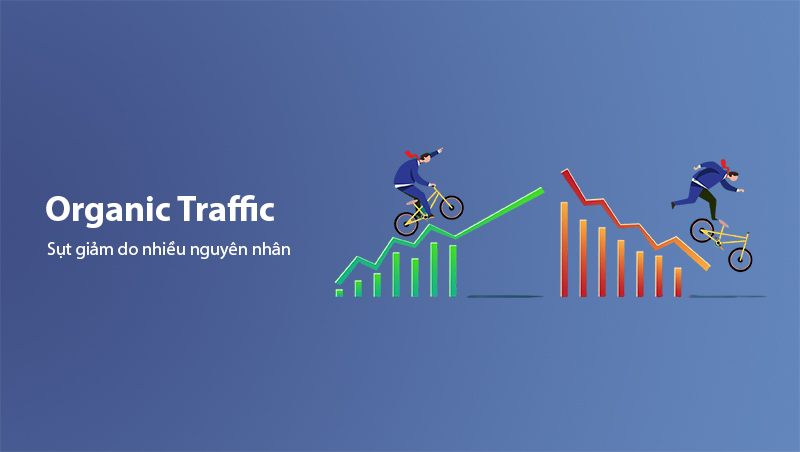
7 Ways to Increase Organic Traffic Naturally
Increasing Organic Traffic enhances website performance and brings in high-quality leads at a lower cost than paid advertising. Here are seven detailed and effective strategies to optimize Organic Traffic:
Optimize Keywords
Keywords are the foundation of SEO, and proper optimization helps improve rankings and Organic Traffic:
- Conduct thorough keyword research: Use tools like Google Keyword Planner, Ahrefs, or SEMRush to find high-search-volume, low-competition keywords.
- Naturally integrate keywords: Add keywords to titles, meta descriptions, headers (H1, H2, H3), and throughout the content naturally to avoid keyword stuffing.
- Target long-tail keywords: These detailed phrases often have lower competition and attract higher-quality traffic.
Update and Optimize Old Content
Older content often has untapped potential but loses effectiveness without updates. Revitalize it by:
- Adding fresh information: Update articles with current trends, recent data, or new examples to enhance relevance.
- Optimizing keywords: Replace outdated keywords with trending ones to improve rankings.
- Reformatting content: Include visuals like images, videos, or infographics to make the content more engaging.
Create High-Quality Content
Content is king, and producing high-quality content is critical to attracting and retaining users:
- Deliver value: Write content that addresses user needs, solves problems, or provides useful insights.
- Apply E-A-T principles: Ensure content showcases Expertise, Authoritativeness, and Trustworthiness to gain Google’s favor.
- Optimize article length: Long-form content (1,500 words or more) often performs better in search rankings, provided it remains relevant and concise.
Optimize Technical SEO
Technical factors significantly affect how Google crawls and ranks your website:
- Improve page speed: Use CDNs, compress images, and minimize JavaScript/CSS files.
- Fix technical errors: Address issues like 404 errors, improper redirects, and indexing problems using tools like Google Search Console or Screaming Frog.
- Ensure mobile-friendliness: Use responsive design to optimize the user experience across devices.
Build High-Quality Backlinks
Backlinks are vital for Google’s ranking algorithm. A robust backlink strategy accelerates rankings:
- Acquire links from authoritative websites: Write guest posts, collaborate on content, or conduct interviews to earn backlinks from reputable sources.
- Create link-worthy content: Resources like research reports, free tools, or in-depth guides attract natural backlinks.
6. Leverage Social Media to Boost Organic Traffic
Although Social Media doesn’t directly generate Organic Traffic, it can indirectly support SEO efforts:
- Share content on social platforms: Publish posts on Facebook, Instagram, or LinkedIn to reach a broader audience.
- Engage in groups or communities: Share helpful content in relevant discussions to drive users to your site.
- Run light ads: Use social media ads to amplify your content’s reach and improve SEO rankings.
Enhance User Experience (UX)
Google prioritizes websites that deliver exceptional user experiences. Improve UX by:
- Streamlining website navigation: Create clear, intuitive menus to help users quickly find information.
- Reducing load times: Faster load speeds decrease bounce rates and keep users engaged.
- Encouraging interaction: Use features like comments, reviews, and call-to-action (CTA) elements to boost engagement.
Key Terms and Concepts Related to Organic Traffic
Understanding these related terms and concepts is essential for effectively optimizing Organic Traffic:
| Term | Definition |
|---|---|
| SERP (Search Engine Results Page) | The page displayed by a search engine after a user submits a query. Organic Traffic originates from non-paid results on SERPs. |
| Keywords | Words or phrases users type into search engines.
|
| CTR (Click-Through Rate) | The percentage of users who click on your link from the total impressions on SERPs. Higher CTR indicates an appealing title and meta description. |
| Bounce Rate | The percentage of users who leave your website after viewing only one page. High bounce rates can negatively impact rankings and Organic Traffic. |
| Backlink | Links from other websites to your site. High-quality backlinks improve site authority and boost Organic Traffic. |
| Core Web Vitals | Google’s key metrics for measuring website performance:
|
| On-Page SEO and Off-Page SEO |
|
| Organic CTR | The percentage of clicks on non-paid results in SERPs. Improving Organic CTR boosts Organic Traffic. |
Note: Understanding and correctly applying these concepts and terms not only improves your SEO performance but also comprehensively optimizes your strategy to increase Organic Traffic.
Frequently Asked Questions About Organic Traffic
Is Organic Traffic More Important Than Paid Traffic?
- Organic Traffic provides long-term stability and sustainability compared to Paid Traffic. Once your content ranks high on search engines, it can generate ongoing traffic without additional ad spend. However, Paid Traffic is more suitable for short-term campaigns when quick results are needed.
How Can You Monitor Organic Traffic?
- Use Google Analytics to track Organic Traffic from natural search sources.
- Additionally, Google Search Console lets you analyze keyword performance and impressions, helping you fine-tune your SEO strategy.
Does Organic Traffic Depend on Content?
- Yes, content plays a crucial role in driving Organic Traffic. High-quality, keyword-optimized content that meets user search intent improves visibility on search engines.
How Can You Maintain Stable Organic Traffic?
- Regularly update content: Ensure older articles remain relevant to current trends.
- Conduct technical SEO checks: Fix issues like 404 errors, slow load times, and improper indexing.
- Build backlinks: Maintain links from authoritative websites to strengthen your domain authority.
Why Might Organic Traffic Decline Without Major Changes?
- Google algorithm updates: New updates may affect your keyword rankings.
- Competitor improvements: Competitors optimizing their SEO strategies could lower your rankings.
- Keyword demand changes: If targeted keywords lose popularity, Organic Traffic may decrease.
Should You Combine Organic Traffic with Paid Traffic?
- Yes, combining both helps achieve optimal results. While Paid Traffic delivers immediate traffic, Organic Traffic ensures sustainability and cost-efficiency over time. Use Paid Traffic to support new keywords while waiting for Organic Traffic to grow.
Conclusion
Organic Traffic is one of the core factors that enable a website to grow sustainably in the digital age. Beyond providing high-quality, natural traffic, Organic Traffic helps businesses lower ad costs, optimize SEO strategies, and build long-term brand recognition.
Organic Traffic is not a short-term result. It’s a process that requires consistent investment and perseverance. Start by creating quality content, optimizing technical SEO, and continuously improving to achieve long-term success.
By adopting these strategies, you not only boost traffic but also deliver real value to users, building a strong and distinctive brand in the market.
Latest Posts

Lesson 26. How to Use break, continue, and return in Java | Learn Java Basics
A guide on how to use break, continue, and return statements in Java to control loops and program execution flow effectively.

Lesson 25. The do-while Loop in Java | Learn Basic Java
A detailed guide on the do-while loop in Java, including syntax, usage, examples, and comparison with the while loop.

Lesson 24. How to Convert Decimal to Binary in Java | Learn Basic Java
A guide on how to convert numbers from the decimal system to the binary system in Java using different methods, with illustrative examples.

Lesson 23. How to Use the While Loop in Java | Learn Java Basics
Learn how to use the while loop in Java with syntax, real-world examples, and practical applications in Java programming.
Related Posts
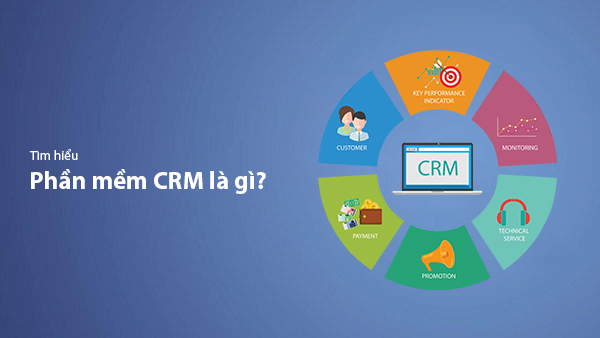
What is CRM Software? Top 15+ Best Customer Relationship Management Software
Discover the definition of CRM software, its role in customer relationship management, and a list of 15+ top CRM solutions to help businesses enhance customer service performance and achieve sustainable growth.
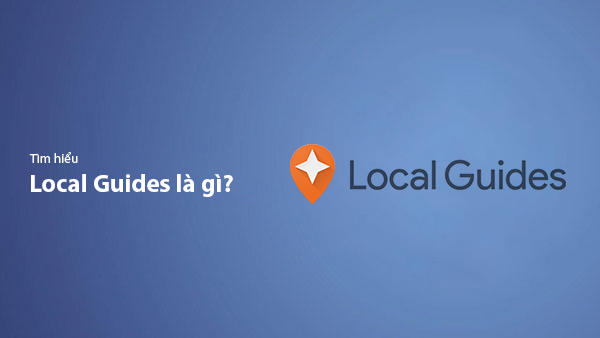
What Is Local Guide? Benefits of Becoming a Local Guide on Google Maps
Local Guide is a community program by Google Maps where users can contribute reviews, photos, and location information to improve map data. This article explains what Local Guide is and the benefits of being an active member.
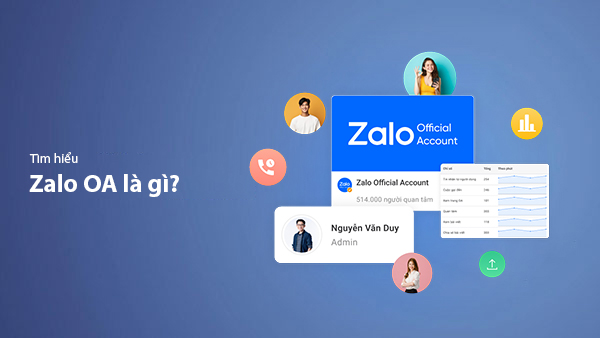
What is Zalo OA? A Detailed Guide to Creating Zalo Official Account for Businesses
Zalo Official Account (Zalo OA) is a crucial tool that helps businesses connect with customers and optimize their online business operations. This article provides a step-by-step guide on how to create a Zalo OA from A to Z.

What is Zalo Ads? A Guide to Running Effective Zalo Ads
Discover what Zalo Ads are and learn how to run effective Zalo advertising campaigns to reach customers and boost sales in the digital era.

